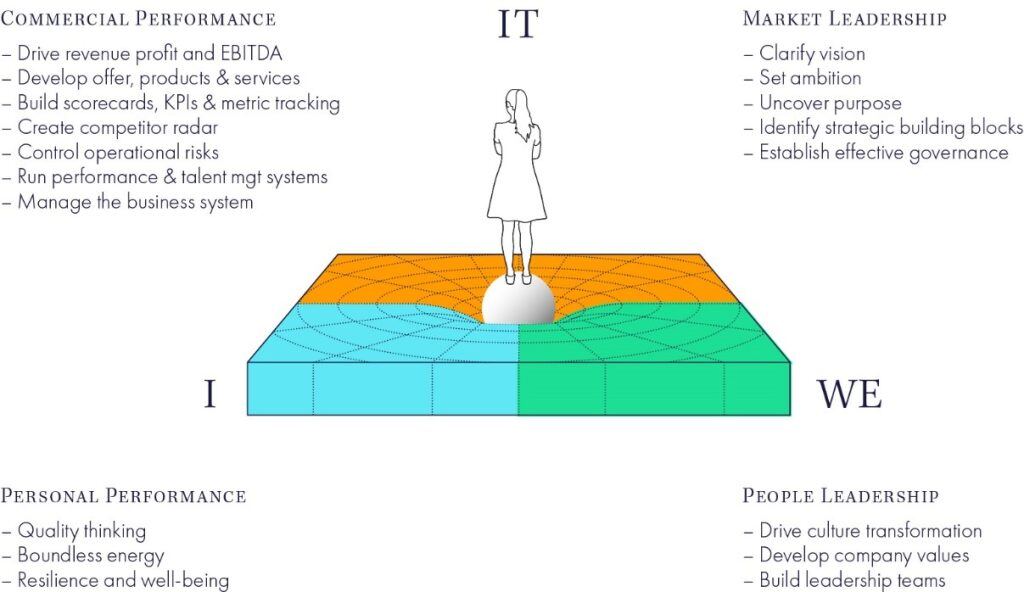
We are taught and conditioned from an early age that achieving things gives us value in life. Whether that is school grades, job promotions, exercise goals or just getting through our ‘to do’ list. We feel good about ourselves when we are achieving things.
However, ‘doing’ can become ‘addictive’. We achieve one thing and then immediately it fuels us to then look for the next thing to accomplish. This in turn often merges with how we feel about ourselves and our sense of identity becomes interlinked with what we do rather than who we are.
CEOs are not immune from the dangers of a focus on achievements. In fact in our experience, they are one of the groups that are at highest risk. Their achievements – whether that’s the success of the business they are leading or their own personal wealth success – become their sole focus. They start to only feel good about themselves when they can see some measurable criteria. When you consider how businesses are measured, it’s no wonder that CEOs become “human doings”.
Yet, human doings are rarely happy. They live in a constant state of discomfort as they search for the next ‘high’ of achievement. They only value themselves when they achieve success, and they criticise themselves when they are not doing as much or as well as they think they should.
These CEO’s are addicted to doing, we call this the IT in our four quadrant (4D) model. The “IT addiction” doesn’t just end up affecting their work, but impacts their decision making, the performance of their teams as well as their personal lives.
Beyond doing
Complete’s 4D leadership model – and Dr Alan’s book of the same name – offers a more complete and holistic view of leadership. Giving us more balance and ultimately a more rewarding life than one that is suck in an overly dominant IT (doing) focused existence.

Unfortunately, the dominance of the external dimension of IT (doing), means that most CEOs are unaware of the potential of the other dimensions.
Think about it for a moment, do you perform better when you are angry and frustrated or when you are focused and passionate? How we are being fundamentally shapes not only what we do but how well we do it. The 4D approach integrates the often-overlooked dimensions of I (being) and WE (relating) whilst also continuing to support the IT (doing).
In fact, even if you are IT addicted and have too much to do you will get more done by balancing out the other quadrants. We perform better when we work with others (relating – the WE quadrant). Great teams and strong customer connections only happen when we pay attention to how we relate to others.
All three dimensions of I, WE and IT deserve attention.
In fact, the most brilliant leaders – the inspirational ones – are not focused on doing (IT), they are focused on being (I). For 27 years, Nelson Mandela was locked up in prison. There was virtually nothing to do – or at least nothing that he had control over. He spent 27 years cultivating his interior landscape – his being. When he left prison in 1990, he stepped up to lead his nation. Really brilliant leadership is built on a very sophisticated interior landscape (I dimension).
Thirty years on, the lesson remains as strong as ever. Focusing solely on doing leads to stress and burnout. For CEO’s the pressure on them is higher than ever. We expect them to work harder and harder on the tasks set. But this only sets executives on a course for stress and burnout. Instead, leaders need to start to explore the other dimensions of being and relating.
Dr Alan Watkins’ book on 4D leadership is a great place to start. The book not only explores the three dimensions (I, WE and IT) that we’ve touched on in this article, but also explains how the fourth dimension (sophistication in the form of vertical development) is the secret to really take leadership development to the next level and the single biggest determinant of future success.
Alternatively, our Complete App can also help you navigate your own journey into new dimensions. You can download it for free here.